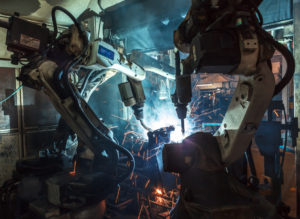
The California Manufacturing Partial Sales and Use Tax Exemption allows manufacturers and certain research and developers to exempt a portion of sales and use tax. In general, this partial exemption allows a qualified person, who purchases qualified tangible personal property and used that property in a qualifying manner, to purchase the property at a reduced tax rate, according to the CDTFA. While it’s been around for a few years, in 2017, California amended the exemption to expand the partial sales and use tax exemption for purchases of certain tangible personal property used in manufacturing or research and development activities.
How to Qualify for the Exemption
In order to be eligible for the exemption, you must meet all three of the following conditions:
- Be engaged in certain types of business. Also known as a “qualified person” who engages 50% or more of the time in manufacturing or research and development activities. Generally, this includes business in all forms of manufacturing, research and development in biotechnology, and research and development in physical, engineering and life sciences.
- Purchase “qualified tangible personal property”. For example, if you made purchases such as machinery and equipment, computers, data-processing equipment, computer software or tangible personal property used in pollution then you have made a purchase of qualified tangible personal property.
- Use the qualified tangible personal property in a qualified manner. The property must be used more than 50% of the time in manufacturing or research and development activities.
California Amendment and Clarification
One of the key amendments is related to the definition of useful life. Generally, qualified property does not include tangible personal property with a useful life of less than one year which was determined based on whether the property was treated as a capital expenditure. The recent revisions to the partial exemption are that businesses that expense (rather than capitalize) some qualifying purchases also receive the exemption. Furthermore, even if you did expense for federal purposes, it does not mean that the property is also expensed for California purposes. California does not adopt all of the federal provisions. Which means that there may be opportunity at a state level for property that was expensed on a federal level. Additionally, if you have expensed for California purposes, there is still some opportunity to amend and change the election to qualify for the partial exemption if it would be more beneficial to capitalize the property.
In the event that your business has already paid the full sales and use tax rate on purchases or were assessed unpaid tax on such property that are eligible for the manufacturing or research and development partial exemption, there is an opportunity for refund or cancellation of an assessment for unpaid tax. Refunds can be obtained through California or your vendors. Generally, the statute of limitations to claim the refund is three years. However, this can be extended based on the situation.
The Takeaway
The manufacturing and research and development sales and use tax exemption offers a reduced tax rate on the purchase of qualifying tangible personal property. With recent amendments, California has expanded the definition of “useful life” for qualified property. The result of this amendment could represent a benefit for taxpayers that may not capitalize all equipment. We think it bears reminding companies that this benefit exists – and may offer an opportunity for refunds. Many states had, for years, offered exemptions for these types of purchases, but California has been relatively late to the game. We still often run into new clients who are unaware of the benefit or who have not fully maximized it. Miles Consulting can help you review and maximize your qualified purchases to take advantage of California’s sales and use tax partial exemption.


















